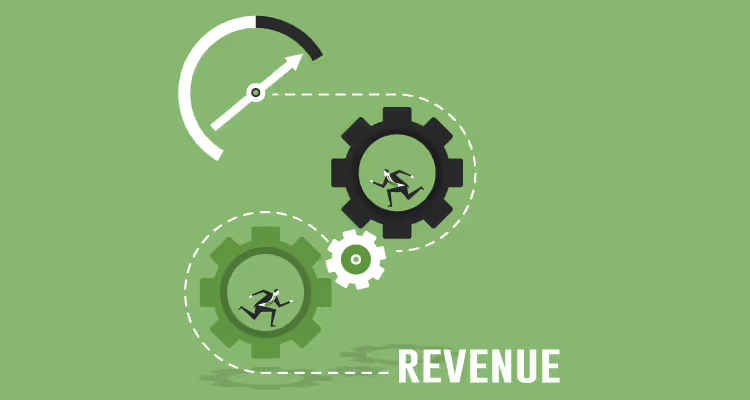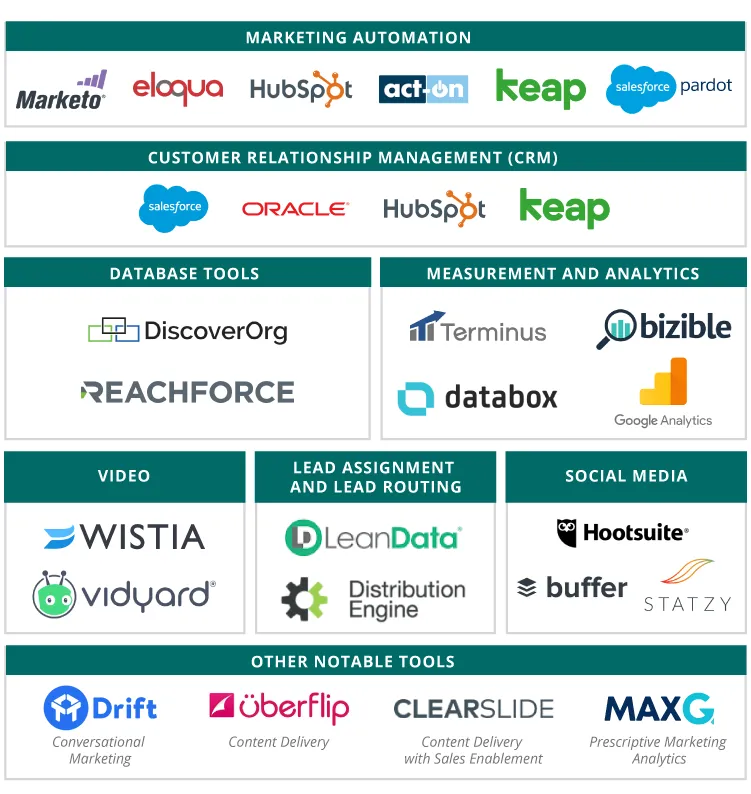Introducing the Revenue Stack
Revenue is the lifeblood of every company. Without it, there is no business to run. With it, most problems are solved.
However, the majority of tech companies are missing out on meaningful revenue due to their inability to rapidly and effectively launch customer incentive programs.

How do we know this? There is strong research on the impact of loyalty and rewards programs:
- 81% of consumers agree that loyalty programs make them more likely to continue doing business with a brand
- 66% of consumers modify the amount they spend to maximize reward collection.
- Eventually, loyal customers spend 67% more than new ones through repeat purchases, larger cart sizes, and frequent upsells.
- Customers who belong to loyalty programs generate between 12 and 18% more incremental revenue growth per year than those who do not participate.
So why are so many companies missing out on this significant potential revenue?
It’s not because they don’t know about these awesome stats or the power of customer incentive programs. It’s because customer incentive programs can be really hard to launch, run and optimize without a complete Revenue Stack.
In this article, we’ll introduce you to the Revenue Stack and how it works to help you run customer incentive programs that:
- Acquire more customers
- Increase revenue per customer
- Drive customer referrals
- Reduce churn
- Create more repeat customers
What’s a Stack?
In most digital businesses, you’re likely to hear the term “stack” at some point. It’s often preceded by a descriptive term like “Tech” or “Marketing”. While this term is common, before we go forward, let’s clarify exactly what a stack is.
Stack:
A stack is a logical combination of tools, frameworks, and programming languages used to achieve a unified objective or provide a service.
Each layer is built atop the one below, thus creating a stack. Layers of the stack are connected to the layer above and below allowing the passing of information and logic from the top layer to the bottom layer.
The most common example of a stack is a Tech Stack. This is because the term “stack” actually comes from development. A Tech Stack will explain all of the technology used to run your digital product or service.
Another common stack is a Marketing Stack. While the idea of a Marketing Stack is much newer than a Tech Stack, it has still been widely adopted. Marketing Stacks show all of the marketing technology a company is working and how they work together.
It’s rare to see two Stacks with the exact same technology in them. Depending on your needs and situation, you will likely select slightly different solutions than other companies.
However, it’s common to see Stacks with the layers named the same between companies. This is because layer names are typically descriptive of their function.
Introducing the Revenue Stack
There are a wide range of Stacks used in digital businesses. The majority of them have been thought about in detail and intentionally built.
The Revenue Stack is an exception to this rule. It’s been built almost by accident. As the digital transformation has occurred in businesses, departments have become intertwined with a common goal of increasing Revenue.
Marketing, Sales, Customer Service, and Product teams are all interfacing inside the product or service they support. This has been done under the banner of customer experience, which is ultimately a way to increase revenue. Because of this, all of these departments are now being given revenue targets.
In order to help all of these departments work together to increase revenue, a Stack is needed; the Revenue Stack. The Revenue Stack models how revenue is generated and collected company-wide.
Why is the Revenue Stack important?
We know that special offers and incentives work to drive sales. In fact, they can help at every stage of the lifecycle from acquisition to retention. However, today it’s very hard for Marketing and Support teams to launch initiatives that can extend these offers or incentives without custom development.
The Revenue Stack is a framework that teams can use to ensure that Sales, Marketing, Support, and Product are aligned and able to efficiently work together to maximize revenue.
Think of a well-built Revenue Stack as a way to automate much of what a salesperson does but for a much lower cost.
This means that consumer businesses can now deploy tactics that were previously too expensive, such as sending individualized special offers, or rewarding users for using specific features. Enterprise businesses save time and money in their sales process by automating churn reduction offers and in product upsell offers.
A Short History of the Revenue Stack
As we said earlier, most Stacks are built intentionally. So how did the Revenue Stack get built by accident?
You can think of the history of the Revenue Stack as two subway tunnels being built to a single station. However, neither tunnel knew the other was also going to the same station.
In reality, the Revenue Stack was built by two teams based on their own needs; The Product Team and the Marketing Team.
First, the product team was tasked with collecting money from the customer. They most likely built a way to collect credit card payments. Then they built a way to manage customer plans or product prices to ensure the right amount is collected. Lastly, they integrated this all into the product to ensure the right product or service is delivered for payment.
Second, the marketing team was tasked with getting customers and helping them spend. They started by developing ways to generate traffic and leads. They then worked on how to help those leads become customers through tactics like drip email campaigns. Lastly, they integrated in-app messaging into the product to engage users in order to increase product usage and purchase value.
As you can see, our proverbial tunnel builders both ended up in the product and focused on generating revenue but had no idea that the other was also going there. Because of this, the tunnels are misaligned and getting from track to track is hard for the passengers.
The Anatomy of the Revenue Stack
The Revenue Stack is broken up into 5 layers. Each layer may contain one or more technologies, with some technologies spanning multiple layers.
Acquisition
This layer of the Revenue Stack is focused on acquiring users. These technologies start with generating traffic and end with capturing a user’s information through actions like trials, app downloads or newsletter signups.
(Re)Engagement
The (Re)Engagement layer is focused on engaging and re-engaging the user. These technologies start with live chat and email campaigns and end with in-app tutorials and messaging. The later in the customer journey, the more this layer focuses on revenue generation.
Offer
This layer is about making an offer to a customer and having them accept the offer by making a purchase. The offer layer may contain technology such as product recommendation engines, referral programs, and loyalty and rewards platforms. These solutions are proven to generate large amounts of revenue but traditionally have been the hardest to implement.
Billing
The Billing layer is about managing how much a customer should be charged and what privileges, service or product they get when charged. This layer requires some custom integration into your product or service to work. The price management portion is available from third parties like Stripe and Recurly but is still often custom, especially at larger companies.
Processing
This is the “grid-iron” layer. Processing is where the customer’s bill is charged against their credit card. This layer also may include fraud prevention systems. This is a very utilitarian layer and provides limited opportunity for revenue optimization but is a core requirement of doing business.
The Current State of the Offer Layer
When the Revenue Stack is assembled properly it’s an amazingly powerful tool and can help increase revenue, reduce churn and drive corporate learnings. However, this is rarely the case.
In reality, if you buy an out-of-the-box billing system it will likely offer support for coupon codes such as discounts and free shipping. However, any advanced logic, segmentation or non-discount offers are not supported and have to be custom built.
If a digital product or service is looking for more than mass coupon codes there are three choices:
- Do nothing
- Build a specific campaign
- Build a custom Offer Layer
The majority of companies do nothing due to the cost, effort, and risk of building a custom offer layer. Instead, they make coupon systems and blast messaging work to the best of their ability.
If companies do build something they often build a very simple and specific campaign. This reduces the amount of development time and cost required. However, these solutions typically lack flexibility, reporting, and stability. Furthermore, if the specific campaign built doesn’t perform the time and effort invested is wasted.
The companies that do build complete custom offer layers are typically very large, such as AirBnB and Uber. Even companies of scale only built custom offer layers because they need to.
What’s Next?
A fully implemented Revenue Stack is a framework to increase revenue. It has the ability to dramatically increase revenue, reduce churn and encourage product adoption. However, as we’ve mentioned most companies have little to no offer layer today.
Building a custom offer layer is undesirable, expensive and risky. We’ve built the SaaSquatch Loyalty and Rewards platform for digital products and services so you don’t have to build your own custom offer layer.
With the SaaSquatch platform, you can intelligently tie the (re)engagement layer to the billing layer. Once set up, instead of custom development projects to launch specific campaigns, you can rapidly launch campaigns from a library of pre-built customer incentive programs.
If you think a Revenue Stack makes sense for your business I would recommend you:
- Map out how your current tools and custom projects fit into the Revenue Stack model.
- Identify which customer incentive programs you would like to test over the next several years and estimate their impact.
- Consider how likely it is that you will build these programs in-house vs. use a tool like SaaSquatch.
To learn more about designing a successful loyalty strategy in the digital economy, sign up for the Digital Loyalty Academy today.



